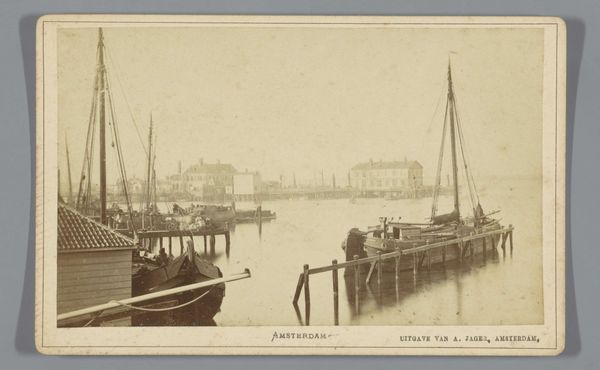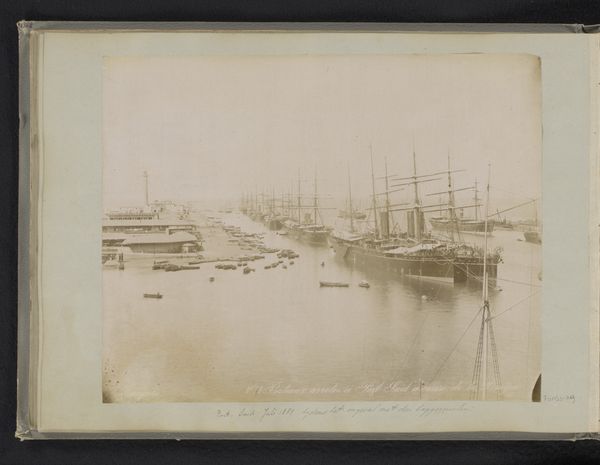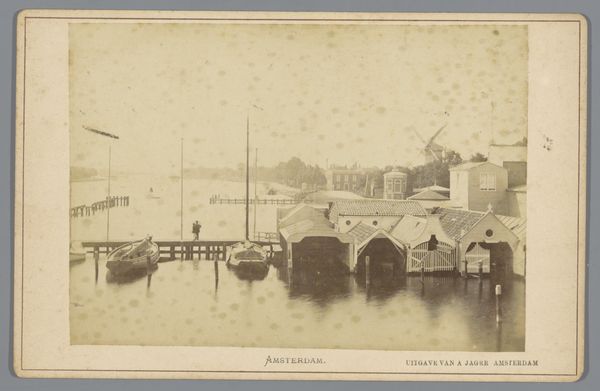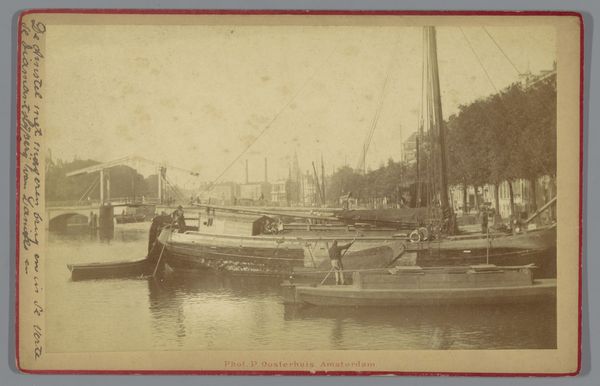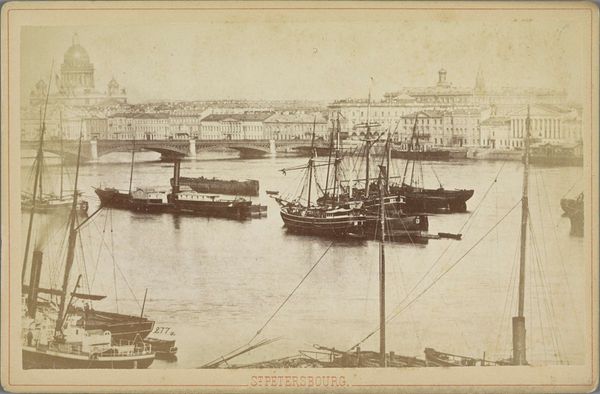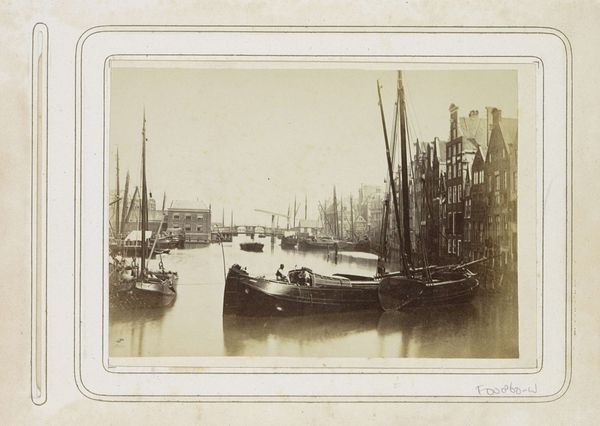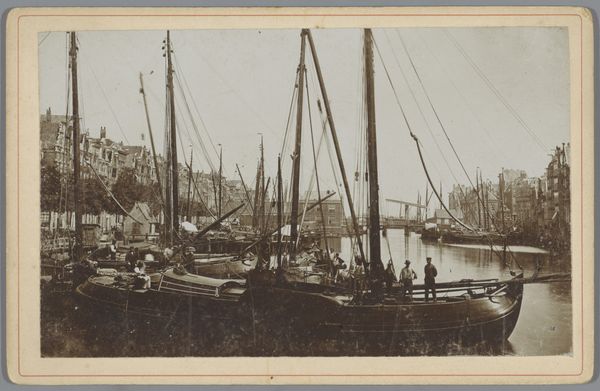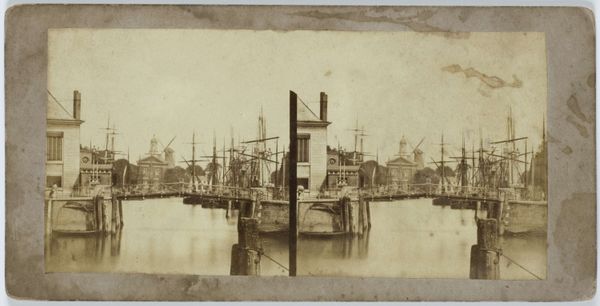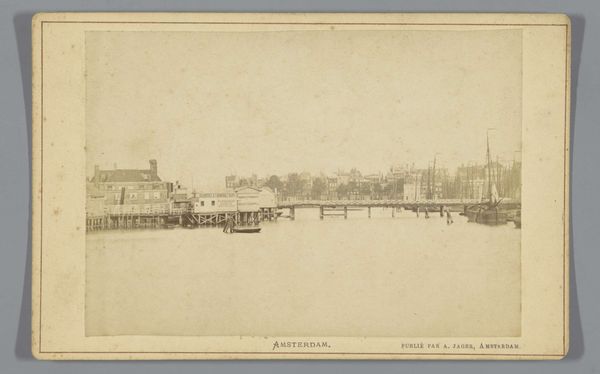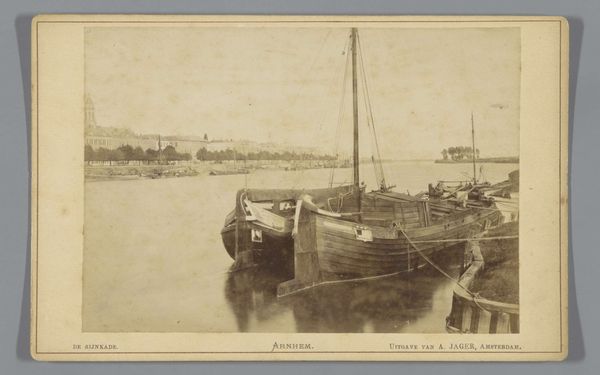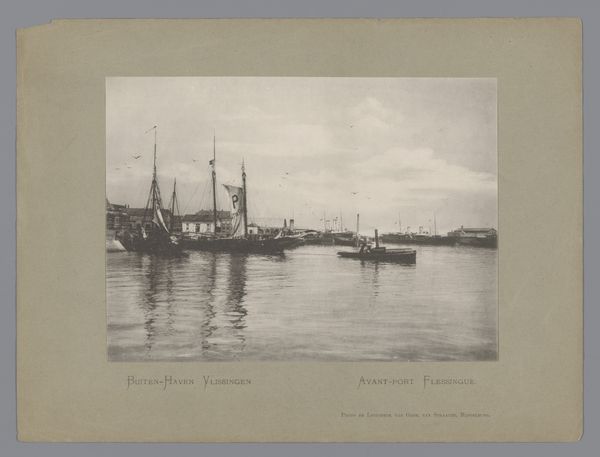
Gezicht op de achterzijde van de Korenbeurs, de Oude Brug en de Nieuwe Brug in Amsterdam, gezien vanaf het Damrak 1860 - 1883
0:00
0:00
photography, gelatin-silver-print
#
dutch-golden-age
#
landscape
#
photography
#
gelatin-silver-print
#
cityscape
Dimensions: height 107 mm, width 167 mm
Copyright: Rijks Museum: Open Domain
This photograph of Amsterdam’s harbor was captured by Andries Jager, using the wet collodion process, a popular method in the mid-19th century. The image is made by coating a glass plate with light-sensitive chemicals, then exposing it in a camera. The appeal of photography at this time was partly due to its apparent objectivity. Yet, as a maker, Jager had many choices to make. Photography may have been new, but it quickly became central to the machinery of capitalism. It was used to document cityscapes, landscapes, and people, creating a visual inventory of the world that could be used for commercial purposes. As you can see in this photograph, labor is a key part of the image, as men work on boats, and goods are transported along the harbor. By emphasizing the importance of materials, making, and context, we can understand how photography can become an essential tool for understanding the world around us, as well as its social and economic structures.
Comments
No comments
Be the first to comment and join the conversation on the ultimate creative platform.
